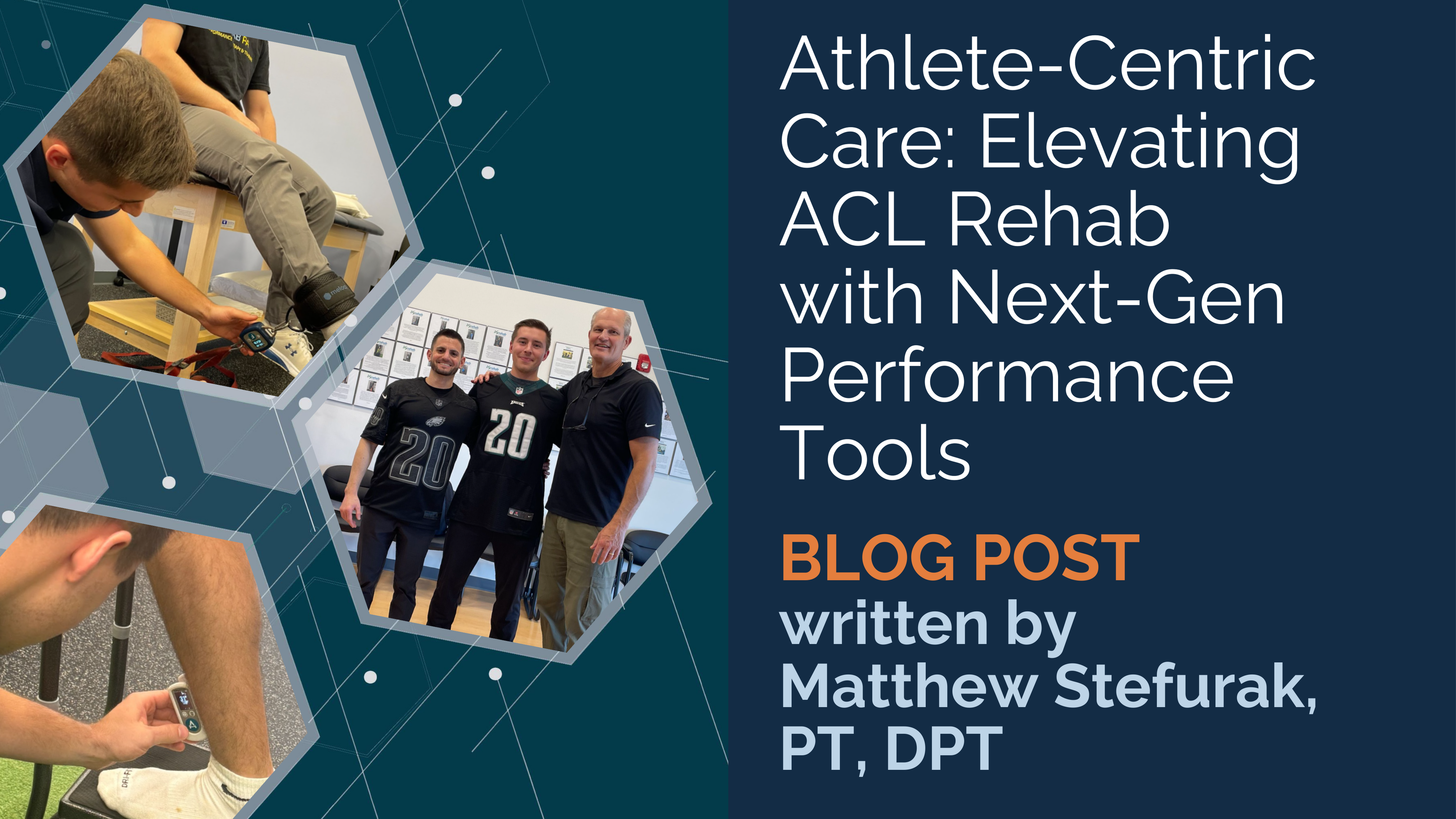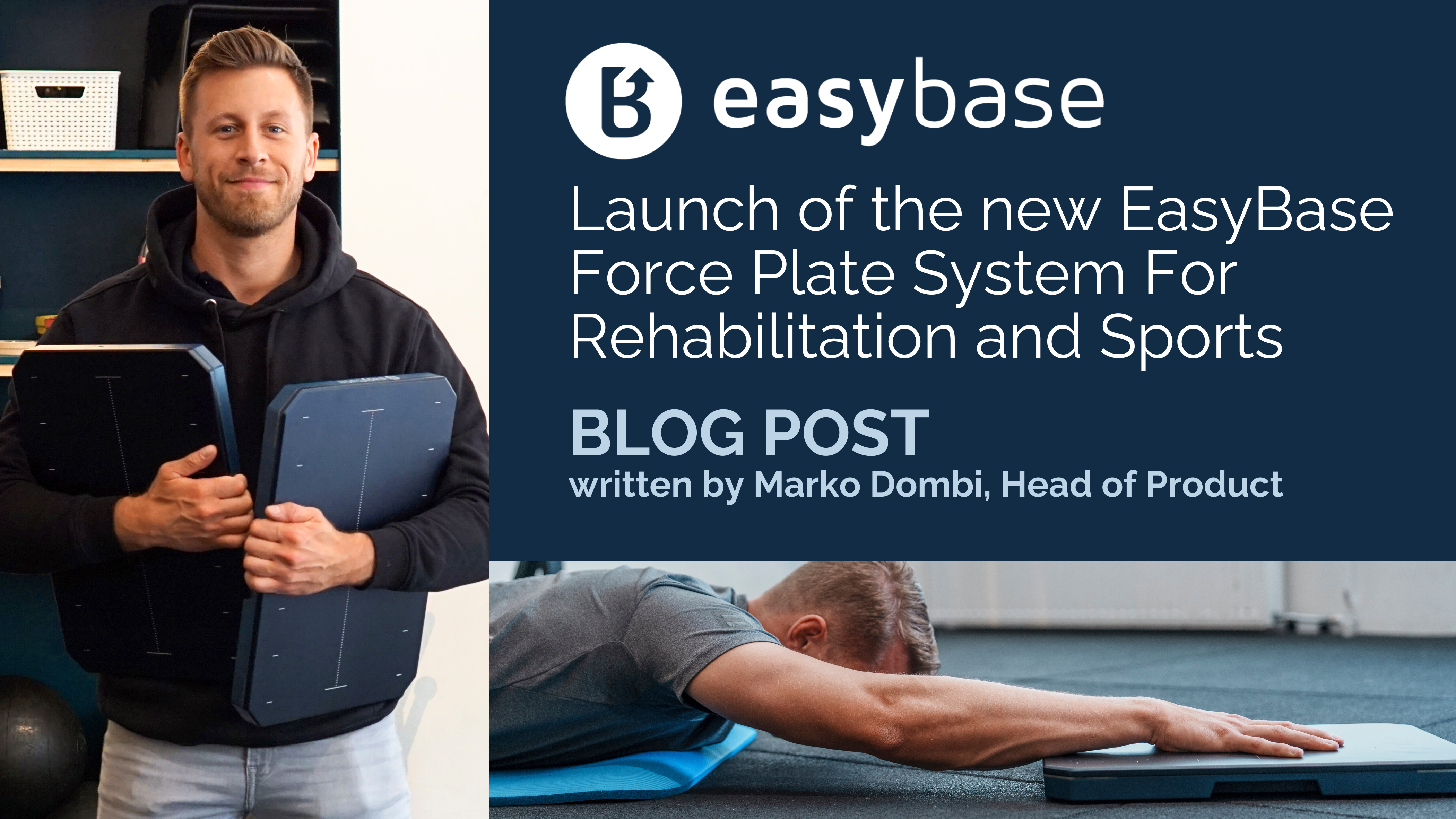-

, by Marko Dombi Athlete-Centric Care: Elevating ACL Rehab with Next-Gen Performance Tools
-

, by Marko Dombi Launch of the EasyBase - Force Plate System For Rehabilitation and Sports
-

, by Marko Dombi Interview with the researcher | Enhanced Paper Grip Test Project
Gaining Positive Feedback from Patients to Grow Your Practice
- , by Team Meloq
- 14 min reading time

Discover practical strategies to collect and use positive feedback from patients ethically, boosting trust and outcomes in your physiotherapy practice.
Positive feedback from patients is much more than a collection of nice reviews. In physiotherapy and sports rehabilitation, this feedback is a form of actionable data, offering direct insight into the efficacy of our methods—from manual techniques to communication styles. Leveraging these insights is a cornerstone of elevating patient outcomes and refining clinical practice.
Why Patient Feedback is a Clinical Superpower
Let's reframe how we view patient feedback. It is not just for marketing copy; it is a core component of evidence-based practice. When you understand what resonates with your patients—a specific exercise, an explanation of their condition, or the clinic environment—you gain a continuous stream of data to sharpen your clinical approach.
Actively seeking and analyzing positive feedback from patients reinforces the therapeutic alliance, a scientifically recognized cornerstone of successful rehabilitation (1). When patients feel their insights are heard and valued, it builds trust and improves their commitment to treatment plans. This feedback loop offers significant advantages for any modern practice.

Benefits of Prioritizing Patient Insights
- Validation of Clinical Methods: Consistent positive comments about a certain manual therapy technique or home exercise program provide real-world evidence of its effectiveness with your specific patient population.
- Enhanced Therapeutic Alliance: Actively listening and responding to feedback strengthens the patient-clinician relationship, which is directly linked to better recovery outcomes (2).
- Guidance for Professional Development: Feedback can highlight your personal strengths, such as your ability to explain complex conditions simply, guiding you on which skills to develop further.
- Improved Patient Outcomes: When we adapt our approach based on what patients report as most helpful, the overall quality of care improves, leading directly to better functional results and higher satisfaction.
A study on patient-reported outcomes drives this home, emphasizing that when healthcare services are tailored to individual needs, there is a clear link to improved physical and mental health outcomes (3). This confirms that a patient-centered approach, guided by feedback, is essential.
Embracing this data-driven mindset is a huge part of the future of physical therapy. It turns subjective patient compliments into a valuable dataset for standardizing high-quality care, mentoring colleagues, and demonstrating the efficacy of your interventions.
References
- Ferreira PH, Ferreira ML, Maher CG, Refshauge K, Latimer J, Adams R. The therapeutic alliance between clinicians and patients predicts outcome in chronic low back pain. Physical Therapy. 2013;93(4):470-478.
- Hall AM, Ferreira PH, Maher CG, Latimer J, Ferreira ML. The influence of the therapist-patient relationship on treatment outcome in physical rehabilitation: a systematic review. Physical Therapy. 2010;90(8):1099-1110.
- Organisation for Economic Co-operation and Development. Healthcare systems need to better respond to patients’ needs, finds first international OECD patient survey. Paris: OECD; 2023 Feb 28. Available from: https://www.oecd.org/newsroom/healthcare-systems-need-to-better-respond-to-patients-needs-finds-first-international-oecd-patient-survey.htm
Building a Culture That Invites Honest Feedback
Genuine feedback does not happen by chance; it must be cultivated within an environment built on trust and psychological safety. To gather meaningful insights, we must create a clinic culture where patients feel heard and valued. This means shifting from a reactive stance to proactively embedding feedback into the clinical conversation. The goal is to frame feedback as a collaborative tool for better care, not a performance review.
Ditch Generic Questions for Insightful Dialogue
One of the simplest yet most powerful changes is to move away from the generic, "How are you feeling?" This question often elicits a simple, one-word answer like "fine" or "better." Instead, ask more specific, impactful questions that encourage patients to reflect on their care.
- "What part of our session today felt the most beneficial for you?"
- "Thinking about the home exercises, which one has made the biggest difference this week?"
- "Was there anything in my explanation of your condition that was particularly clear or helpful?"
These questions guide the patient to think critically about their treatment, providing you with specific, actionable information. You can discover more about structuring these conversations by exploring the rehabilitation frame of reference, which emphasizes a patient-centered approach. This nuanced communication is a key driver of patient satisfaction.
Research supports this. A large-scale analysis of survey data from 2019 to 2021 found a strong positive correlation between better provider-patient communication and overall patient satisfaction in both outpatient and inpatient settings (1). You can learn more about these patient satisfaction findings.
The Art of Timing: When to Ask for Feedback
Timing is critical. Asking for positive feedback from patients should not be a one-time event reserved for discharge. It must be woven into the fabric of your care. Start with brief, informal check-ins during treatment sessions. This normalizes the act of giving and receiving feedback. A more structured request can then be made at the end of a treatment block or at discharge. This multi-touchpoint approach makes the final request feel natural, cultivating a space where patients feel their voice matters from day one.
Reference
- Hagerty T, Williams M. What Really Drives Patient Satisfaction? An Analysis of the HCAHPS Survey Data, 2019-2021. Cureus. 2024;16(5):e59777.
Practical Tools for Capturing Patient Voices
To consistently obtain valuable positive feedback from patients, a system is necessary. It is time to move from the why to the how by setting up practical, low-friction methods that fit into your clinical workflow. This creates a steady stream of insights, not just random comments.
Simple, non-digital tools can be effective. Consider placing end-of-care comment cards at the reception desk. They offer a discreet, quick way for patients to share their thoughts. Another approach is using specific prompts during the final session, such as, "What was the single most valuable part of your treatment journey with us?" This provides immediate, specific feedback.
Scaling Feedback Collection With Digital Tools
For scaling up, digital tools are invaluable. Automated email or SMS surveys, triggered by practice management software after a final appointment, are highly efficient. They reach patients at an opportune time and can significantly boost participation rates.
When creating these surveys, keep them focused. Ask questions that yield actionable information about their outcomes, your communication, and their overall experience. One of the most powerful and straightforward metrics is the Net Promoter Score (NPS). It is a single question—"On a scale of 0-10, how likely are you to recommend our clinic to a friend or colleague?"—that serves as an excellent indicator of patient loyalty and satisfaction.
This infographic breaks down the core ideas for building the trust needed to get honest feedback.

As shown, it all comes down to creating a safe environment, actively asking for input, and then genuinely listening. These are the building blocks for gathering patient insights that truly matter.
Crafting Questions That Get Useful Responses
The quality of the feedback you receive is a direct result of the quality of your questions. Avoid generic queries and be specific.
For example:
- Instead of: "Were you satisfied with your care?"
- Try: "Which specific manual therapy technique or exercise provided you with the most relief?"
And another example:
- Instead of: "How was your experience?"
- Try: "Can you share one thing we did that made your recovery process easier?"
Targeted questions help patients recall specific details, giving you valuable information to improve your practice. This need for precision applies to the objective measurement tools used in the clinic. To see how technology can support your evidence-based practice, it's worth learning more about the role of a dynamometer for physical therapy. For those looking to establish an efficient system, there are proven strategies for collecting patient feedback effectively that can elevate your efforts.
Comparing Patient Feedback Collection Methods
Choosing the right method for your clinic can make a significant difference. Some methods are suited for quick, in-the-moment thoughts, while others are better for detailed, long-term analysis.
| Method | Pros | Cons | Best For |
|---|---|---|---|
| Comment Cards | Inexpensive, anonymous, and easy for patients. | Low response rate, feedback can be vague. | Capturing immediate, general impressions at the clinic. |
| Verbal Prompts | Direct, personal, and provides rich, qualitative data instantly. | Not scalable, relies on clinician memory, can feel pressured. | Deepening the patient relationship during the final session. |
| Email/SMS Surveys | Automated, scalable, and allows for quantitative data (like NPS). | Can be ignored or sent to spam, impersonal. | Systematically tracking satisfaction and loyalty over time. |
| Online Review Sites | Public-facing, builds social proof, and attracts new patients. | Uncontrolled, can attract negative outliers, requires monitoring. | Building a public reputation and marketing your practice. |
Ultimately, a combination of these methods often works best. This provides the personal touch of in-clinic conversations alongside the scalable data from digital surveys, giving you a well-rounded view of the patient experience.
Turning Positive Feedback into Clinical Excellence

Receiving a glowing review is rewarding, but its true value lies in how you use it. It is about more than acknowledgment; it is about translating that positive experience into tangible improvements across your entire practice. Think of this feedback as a rich source of qualitative data. The goal is to analyze these comments, identify patterns, and understand what your patients truly value. Tagging and sorting this feedback can reveal trends that shape everything from treatment protocols to mentoring junior staff. A simple compliment about your communication style becomes data that validates your approach, turning anecdotes into a dataset for clinical improvement.
From Anecdote to Actionable Insights
So, how do you begin? The key is to organize feedback into simple, clear categories based on the patient journey.
You could try a structure like this:
- Communication & Education: Praise for how you explain conditions, set expectations, or answer questions.
- Manual Techniques: Comments highlighting a specific hands-on approach that brought significant relief.
- Exercise Prescription: Feedback on the clarity and effectiveness of home exercise programs.
- Clinic Environment: Notes on the welcoming atmosphere, punctuality, or interactions with the front-desk team.
This systematic approach helps you identify what contributes to a positive patient experience. This patient-centered mindset has global relevance. The recent OECD Patient-Reported Indicator Surveys, which spanned 19 countries, found a clear link between healthcare tailored to individual needs and better health outcomes (1). You can learn more about how patient-reported data is guiding healthcare reform on a global scale.
By quantifying what works, you not only refine your own skills but also create a blueprint for high-quality, standardized care across your team. Praise for a specific return-to-play protocol, for instance, provides real-world validation that reinforces your clinical decision-making.
When you analyze feedback with this level of detail, you connect subjective patient comments to objective results. It is a crucial part of modern practice, much like using precise tools for physical performance testing to track functional progress. Ultimately, you are turning the patient’s voice into a powerful driver for clinical excellence.
Reference
- Organisation for Economic Co-operation and Development. Healthcare systems need to better respond to patients’ needs, finds first international OECD patient survey. Paris: OECD; 2023 Feb 28. Available from: https://www.oecd.org/newsroom/healthcare-systems-need-to-better-respond-to-patients-needs-finds-first-international-oecd-patient-survey.htm
Ethically Showcasing Feedback to Build Your Practice
Once you have collected positive feedback, the next step is sharing these success stories to build your practice's reputation. This must be handled with professional and ethical care, as patient trust and privacy are paramount. The non-negotiable first step is obtaining explicit, informed consent. A verbal agreement is insufficient. You need clear consent forms that specify exactly where and how a testimonial might be used—whether on your website, social media, or in print materials.
Prioritizing Patient Privacy
Your default setting should always be anonymity. Using a patient's name, photo, or any other identifying information requires their specific, written permission for each individual use. This is not just about compliance; it shows deep respect for their privacy and strengthens the trust you have built. When sharing feedback, focus on comments that highlight specific outcomes and experiences, not just generic praise. A testimonial like, "The targeted exercises for my shoulder instability helped me return to swimming pain-free," is far more authentic and impactful than, "They were great!"
A patient's sense of safety is directly tied to their willingness to recommend a provider. According to a large-scale patient survey, those who report high perceptions of safety rate their 'Likelihood to Recommend' at an average of 85.3 out of 100. For those who feel unsafe, that number plummets to just 34.6 (1).
This feeling of safety is a massive factor in whether a patient will become an advocate for your practice. Amplifying positive patient feedback is a powerful tool, and doing it right involves smart communication. A great way to sharpen these skills is by learning from practical positive review response examples that show you how to engage with comments professionally. By adhering to these ethical guidelines, you ensure that every testimonial you share genuinely reflects your commitment to patient-centered excellence.
Reference
- Press Ganey. Consumerism: The new market force in health care. South Bend, IN: Press Ganey Associates; 2018.
Your Top Questions About Patient Feedback
When starting to gather and use positive feedback from patients, many practical questions arise. Here are some of the most common concerns from fellow clinicians.
How Often Should I Ask for Feedback?
Finding the right rhythm is key to getting good insights without overwhelming patients. A balanced approach is most effective. Sprinkle brief, informal check-ins during treatment sessions. Something as simple as, "How did that new exercise feel last week?" makes feedback a normal part of your conversation. Save more formal or structured requests for the end of a treatment plan or at discharge. For patients in long-term rehabilitation, a brief survey every few months can provide a great snapshot without feeling burdensome. The goal is to make feedback a natural part of the clinical dialogue.
What If a Patient Declines to Give Written Feedback?
Always respect their preference. Not everyone is comfortable with written surveys or online forms, and pressuring them will likely yield inauthentic answers. Many people are more willing to share their thoughts verbally, especially within a trusting clinical relationship. During a final session, you can open the door by asking, "Looking back at your recovery journey with us, what stood out as a positive for you?" If they share something valuable, you can then ask for their permission to use their anonymized comments. Genuine feedback only occurs when a patient feels comfortable and in control.
The direct patient voice—shared in their own words and on their own terms—is incredibly powerful. This was a key takeaway from dialogues between patient advocacy groups and regulatory bodies, highlighting its immense value in understanding the true impact of a condition and its treatments (1).
How Do I Handle Criticism When Asking for Positive Feedback?
View all feedback, including criticism, as a gift—a road map for improvement. When a patient offers constructive criticism, the appropriate response is to thank them for their honesty. Listen to their perspective without becoming defensive. Ask clarifying questions to ensure you fully understand their experience. This is an opportunity to resolve an issue, show your patient they have been heard, and identify a crucial area for growth. How you handle criticism can strengthen the patient relationship even more than receiving praise.
Reference
- US Food and Drug Administration. The Voice of the Patient: A Series of Reports from the U.S. Food and Drug Administration's Patient-Focused Drug Development Initiative. Silver Spring, MD: FDA; 2015.
At Meloq, we believe that objective data and patient-reported outcomes are the bedrock of modern clinical excellence. Our precision measurement tools are designed to help you quantify progress and demonstrate the effectiveness of your interventions, turning valuable patient feedback into even better results. See how our devices can support your evidence-based practice by visiting us at https://www.meloqdevices.com.



